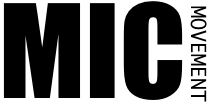Call it an occupational hazard of someone already drawn to research and write about the historical links between beauty, race, and power, but I have begun to observe a strange phenomenon on the streets of Berlin…
Here, where at first it seems there is almost no visibility of black people in advertising, it is always striking when – suddenly – brown faces on posters hove into view…
 © Raphael Hoermann
© Raphael Hoermann|
|
Each of these adverts …
 © Raphael Hoermann
© Raphael Hoermannis intended to promote…
© Raphael Hoermann
coffee–drinking. (Oh, and eating chocolate…whatever takes your fancy.)
Its no secret that, historically, images of people of African and Asian descent have been used to advertise the tropical commodities that their sweated labour helped to produce. Coffee, chocolate, tea, sugar, rum…the list is long.
And in spite of the tendency to express utter dismay when ethnic minorities complain ofracism in German cultural institutions.
Germany is no exception…

These brand icons (Austrian and German) have recently undergone makeovers…

to – literally – tone down racial overtures of images designed to sell coffee and chocolate.


There are signs of attitudinal change, grudgingly reflected in advertising.
Slowly – very slowly – but surely, in my native Britain, for example, people of colour are beginning to feature as consumers rather than as “chocolate-flavoured” or “coffee-coloured” objects. Relatively innocuous adverts for everyday products we all consume, including toothpaste, supermarket offers, sofas, razors etc, increasingly feature actors of diverse ethnic backgrounds.
The recent outcry in the UK over an advert from Cadbury’s proves advertisers there, at least, are having to learn to tread more carefully at the risk of a black consumer boycott.
In Berlin where black consumers are a less sizable group (an immeasurable group since ‘race’ is too taboo to feature on the census) it is still the habit to ignore the spending power of people of colour. And as long our buying power doesn’t figure, who cares about the casual tokenising and exoticizing of difference?
Here it seems, rather than selling to black people selling using black people is still the norm.
Seductive, alluring or caricatured images of people of colour are used to persuade (assumed white) consumers to part with their cash.
And small wonder…I overheard a rather sweet German proverb the other day “Kaffee macht schön!” (coffee makes you beautiful). It refers to the, now perhaps rather dated, habit of rubbing coffee into pale skin to give the impression of a tan. A bit like the practice of using old tea bags in place of tights during wartime shortages…
But how interesting it may be to pause and reflect on practices like coffee-staining (or fake-tanning) pale skin, in connection with the exoticism that tropical commodities, like coffee, like chocolate, have always evoked in our lives…This Neu Berlinerin would love to hear your views…
The first three photos in this post are © Raphael Hoermann



